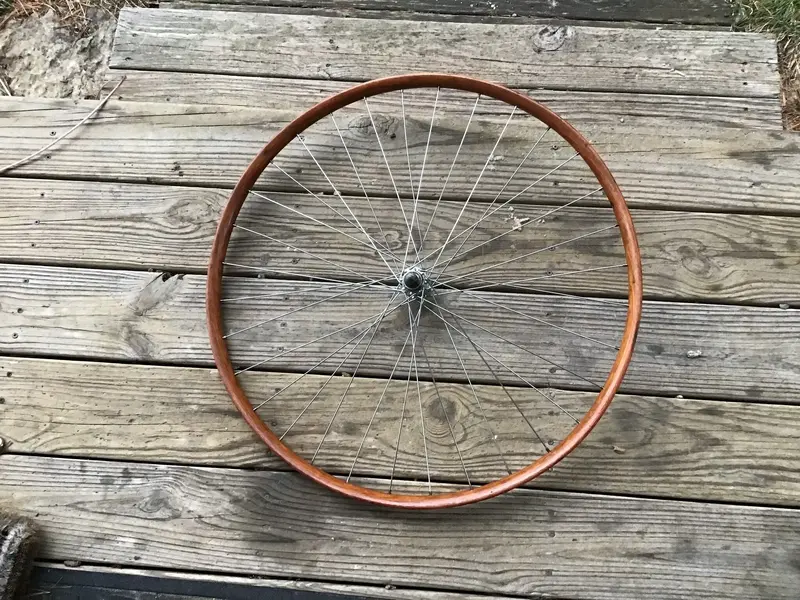This is a great encouraging but also sobering post about tinkering with proper old bikes. Personally I've adored this thread and think your ingenuity and dedication is something else. But one thing is for certain, it put me off ever tinkering with something this old. There's just too many things that need to be completely restored and too many obsolete bits as well, and even if you get it all together, chances are you won't have an every day rider. But there's a genuine beauty in what you've done, and if others read through this thread and don't get deterred, I salute them and hope they'll give it a go. I couldn'tLooks like a winner, it’s in much better shape than what I started with. I would probably dismantle, clean, respoke the wheels, grease, replace the bar cork, and have the seat pan recovered. The paint is nice and aged, I’d leave that. It doesn’t look to have those 1 1/2 inch x 28 single tube tires so modern tubulars should fit. It’s probably worth the $1500. Two years ago you could find these for $500, five years ago $300. Count on a minimum of $1000 in repairs if you do it yourself, not counting any plating or painting. $300 seat cover on the original pan, $175+ tires, $40+ spokes, $25 rubberized cork sheet, $70 for wood wheel spoke nipples/washers and perhaps $250 for new rims if the old ones aren’t salvageable. This is assuming that the drive is not totally worn out. Looks good. Buy it and find a friend that will store it until you are in a position to work on it. You could dismantle it and store the pieces, perhaps even at different places. Someone has the wheels and someone else the frame. The bars and drive could be in a small box in you closet.
You are using an out of date browser. It may not display this or other websites correctly.
You should upgrade or use an alternative browser.
You should upgrade or use an alternative browser.
Fixing a Victorian
- Thread starter Nabeaquam
- Start date
dorset boy
Senior Retro Guru
M 14 Rifle ?Looks pretty nice now, all cleaned, stained and varnished with epoxy. Looks can be deceiving. View attachment 679060A word of caution, I had an 1898 Mauser I used for deer hunting. The stock looked good but it broke with rough use. It was dry rotted and no tougher than poplar. I was in the army in the 1960s and our wood stocks were just about indestructible. These old rims could be a lot more fragile than they look. They will be seldom used and gently. I’ll build modern wood rims for general use. I just want to preserve what I can. I’m even going to use the original nipples.
Guinessisgoodforyou
rBotM Winner
This is an epic build. 
This is a great encouraging but also sobering post about tinkering with proper old bikes. Personally I've adored this thread and think your ingenuity and dedication is something else. But one thing is for certain, it put me off ever tinkering with something this old. There's just too many things that need to be completely restored and too many obsolete bits as well, and even if you get it all together, chances are you won't have an every day rider. But there's a genuine beauty in what you've done, and if others read through this thread and don't get deterred, I salute them and hope they'll give it a go. I couldn't
Well said head Barman. Very well said in fact.
From my own learning, the start point is so critical - and now speaking as I have abandoned my own 1910s bike project. It's a time when a lot was manufactured in-house and transferability between bikes which we take for granted, even of the same period is limited. I calculated to really get one good vintage bike running without bursting the bank would require buying about three vintage bikes, travelling up and down the country for recent barn finds, and spending a lot of time with a wire brush and on-line for a long time scanning for parts and doner bikes.
It's a very very niche area - it requires a lot of dedication. Even if you are into riders and can wrench like @Nabeaquam you are still competing with very serious collectors and museums for the oddest sort after parts. I think it's a niche with fewer players but more serious players who know the subject inside out.
This rider sold very recently on Ebay.fr - 1920s / 1930s Peugeot for 400€ which I thought was rather low, perhaps more of a reflection of economic times? I'm sure the seller would have been disappointed with that considering the effort put in. Tyres alone are very rare.
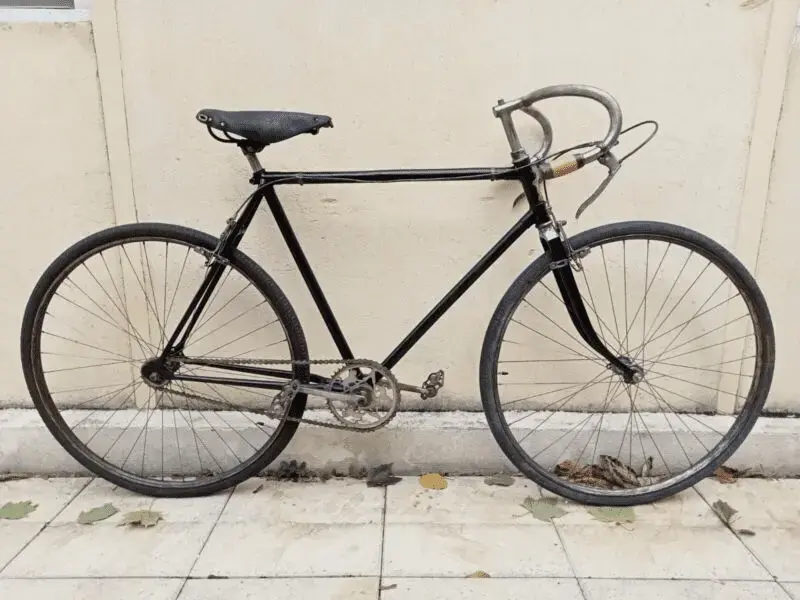
https://www.ebay.fr/itm/165739177923
Will never forget this jaw dropping Dion - Bouton in the USA. Only 3500 USD, but I can see why. There's probably not another like it.
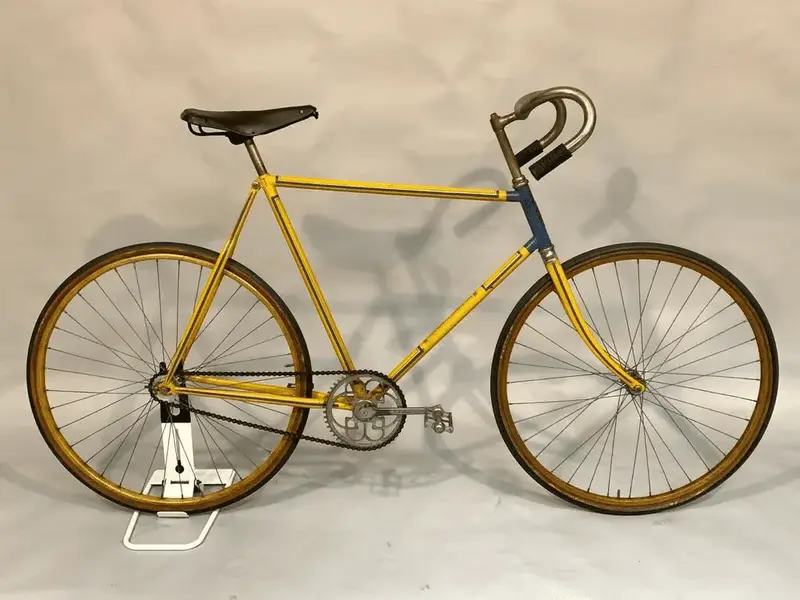
@dirttorpedo - I think if you get involved in this, be very conscious of the $ / mile - my recommendation would be try to get lucky in your own barn find and take it from there. Look in places where no one else is looking
dirttorpedo
Senior Retro Guru
Well said head Barman. Very well said in fact.
From my own learning, the start point is so critical - and now speaking as I have abandoned my own 1910s bike project. It's a time when a lot was manufactured in-house and transferability between bikes which we take for granted, even of the same period is limited. I calculated to really get one good vintage bike running without bursting the bank would require buying about three vintage bikes, travelling up and down the country for recent barn finds, and spending a lot of time with a wire brush and on-line for a long time scanning for parts and doner bikes.
It's a very very niche area - it requires a lot of dedication. Even if you are into riders and can wrench like @Nabeaquam you are still competing with very serious collectors and museums for the oddest sort after parts. I think it's a niche with fewer players but more serious players who know the subject inside out.
This rider sold very recently on Ebay.fr - 1920s / 1930s Peugeot for 400€ which I thought was rather low, perhaps more of a reflection of economic times? I'm sure the seller would have been disappointed with that considering the effort put in. Tyres alone are very rare.
https://www.ebay.fr/itm/165739177923
Will never forget this jaw dropping Dion - Bouton in the USA. Only 3500 USD, but I can see why. There's probably not another like it.
@dirttorpedo - I think if you get involved in this, be very conscious of the $ / mile - my recommendation would be try to get lucky in your own barn find and take it from there. Look in places where no one else is looking
Thanks Woz. I feel that these old Victorian's are a very rare breed in my neck of the woods compared to the UK / Europe and it doesn't make much / any sense to start down this path. Unless I was a machinist/engineer like Paul Brodie. I'll just stick with relatively recent old bikes with easy access to replacement parts.
Nabeaquam
BoTM Winner
Yup. Two gorillas in our unit broke their stocks in closed combat training doing a stock swing at a tire dummy. They got fiberglass replacements. One of them was the pugilist stick champion of Georgia and was built like a body builder. I saw the DI make him do 200 pushups, including a several minute hold. If you were unlucky enough to to get picked to pugilist stick fight with him, you got hurt. Blood, bones or teeth. He actually was built more like Mike Tyson. He would swing a short snappy stroke, just like Mike Tyson, and helmets would fly 20 meters. The average guy can’t brake one of these stocks, no way, we all tried. just about everyone that trained with an M14 wants one.M 14 Rifle ?
Nabeaquam
BoTM Winner
One down. It took awhile as deer hunting and some kind of flu like-illness kept me away from bike tinkering. I don’t think it will ever be perfectly round. Once you get it as good as you can the old warps begin to return. It looks like getting spokes 2 mm short was the right move as there are a few turns remaining to do future truing. The original spokes had two that were protruding beyond the nipple head and one that was out so far that the spoke was filed down. They even filed part of the nipple head off. Nothing is protruding now. I’ll not use these much, but I want to save as much as I can of the original pieces. A lot of money for basically a preservation. New bearings, new spokes, cleaning chemicals, bleaching chemicals, rust remover, stain, tung oil, epoxy, tire glue and new tubular tires. I don’t mind the work but I don’t like to think about the money. I’d probably have a fit and die if I added it up.

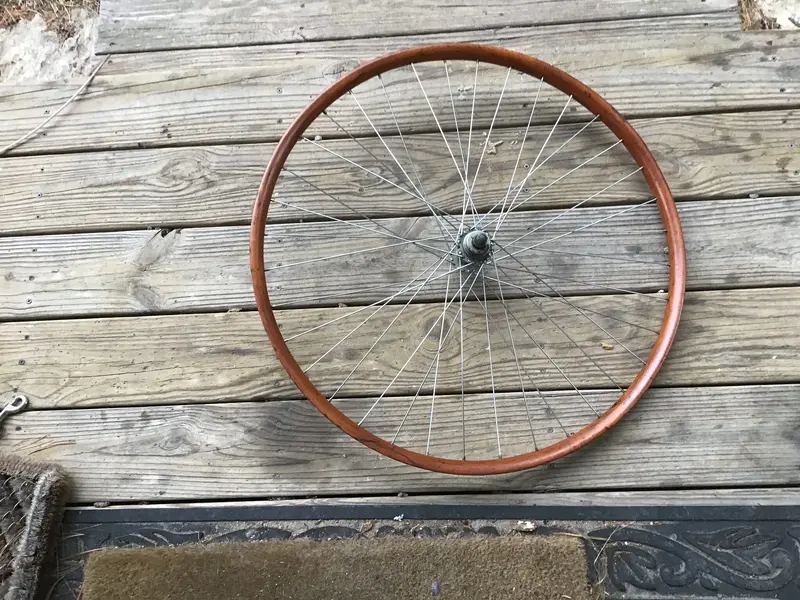
dirttorpedo
Senior Retro Guru
Nice workOne down. It took awhile as deer hunting and some kind of flu like-illness kept me away from bike tinkering. I don’t think it will ever be perfectly round. Once you get it as good as you can the old warps begin to return. It looks like getting spokes 2 mm short was the right move as there are a few turns remaining to do future truing. The original spokes had two that were protruding beyond the nipple head and one that was out so far that the spoke was filed down. They even filed part of the nipple head off. Nothing is protruding now. I’ll not use these much, but I want to save as much as I can of the original pieces. A lot of money for basically a preservation. New bearings, new spokes, cleaning chemicals, bleaching chemicals, rust remover, stain, tung oil, epoxy, tire glue and new tubular tires. I don’t mind the work but I don’t like to think about the money. I’d probably have a fit and die if I added it up. View attachment 683901
Nabeaquam
BoTM Winner
Thanks. I’ve built at least 50 wheels over the last 35 years but not frequently enough to do it without a guide. First with a book tutorial, then on line tutorials. I got tired of trying to follow a guide and figure out what they mean. There are so many ways of building a wheel to arrive at the same thing. It finally clicked, I've done it enough that I was able to build these two without guidance. I’m not sure if I’ll remember how next month. Some of the tricks I use I came up myself. To me my method makes more sense than loading the hub and keeping spokes tied in groups or any of the other methods I’ve seen. I’ve tried them all. I don’t spoke half a side, flip and spoke half the other side and spoke the second set. I spoke one whole half. I locate the non drive key spoke by counting from the drive side key spoke. Can’t explain it but I figured it out by looking at already built wheels and counting spokes. This is how I started. It’s bs.Nice work
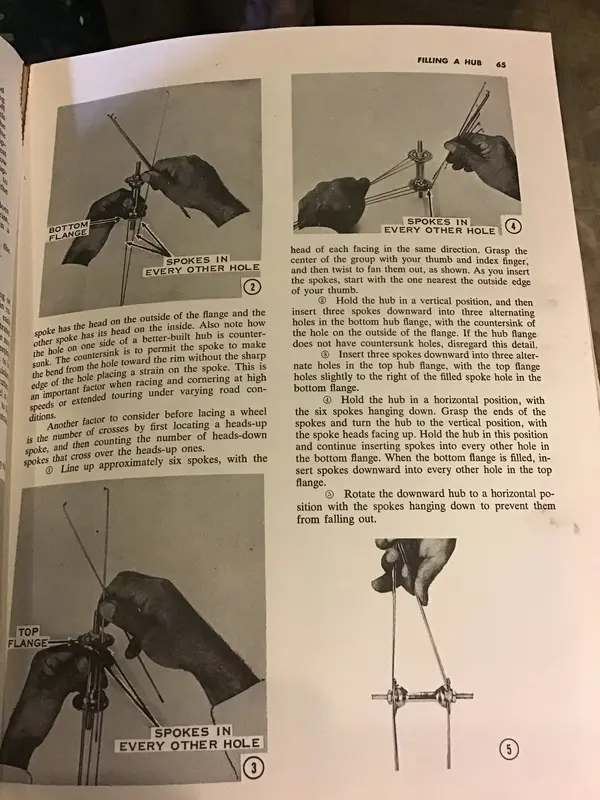
Similar threads
- Replies
- 7
- Views
- 214
- Replies
- 9
- Views
- 2K
- Replies
- 14
- Views
- 2K
- Replies
- 4
- Views
- 1K
